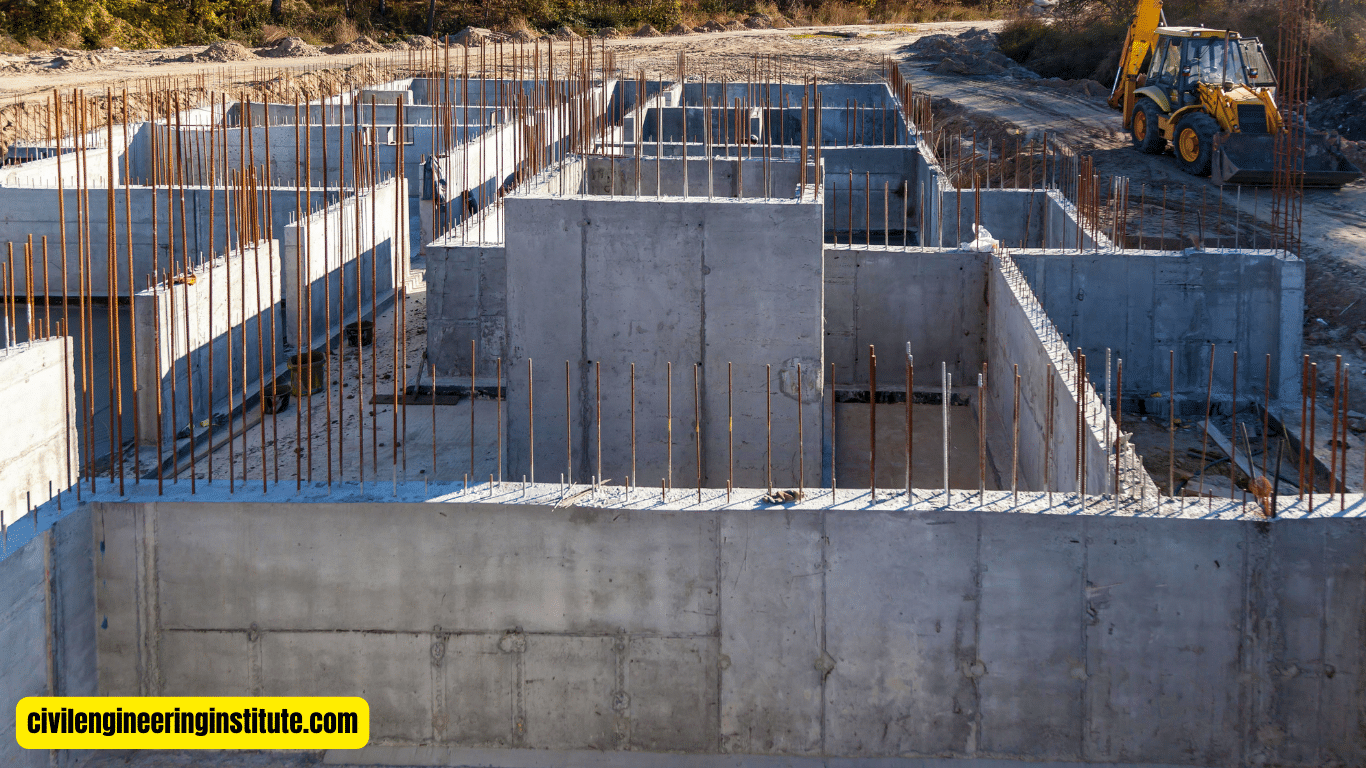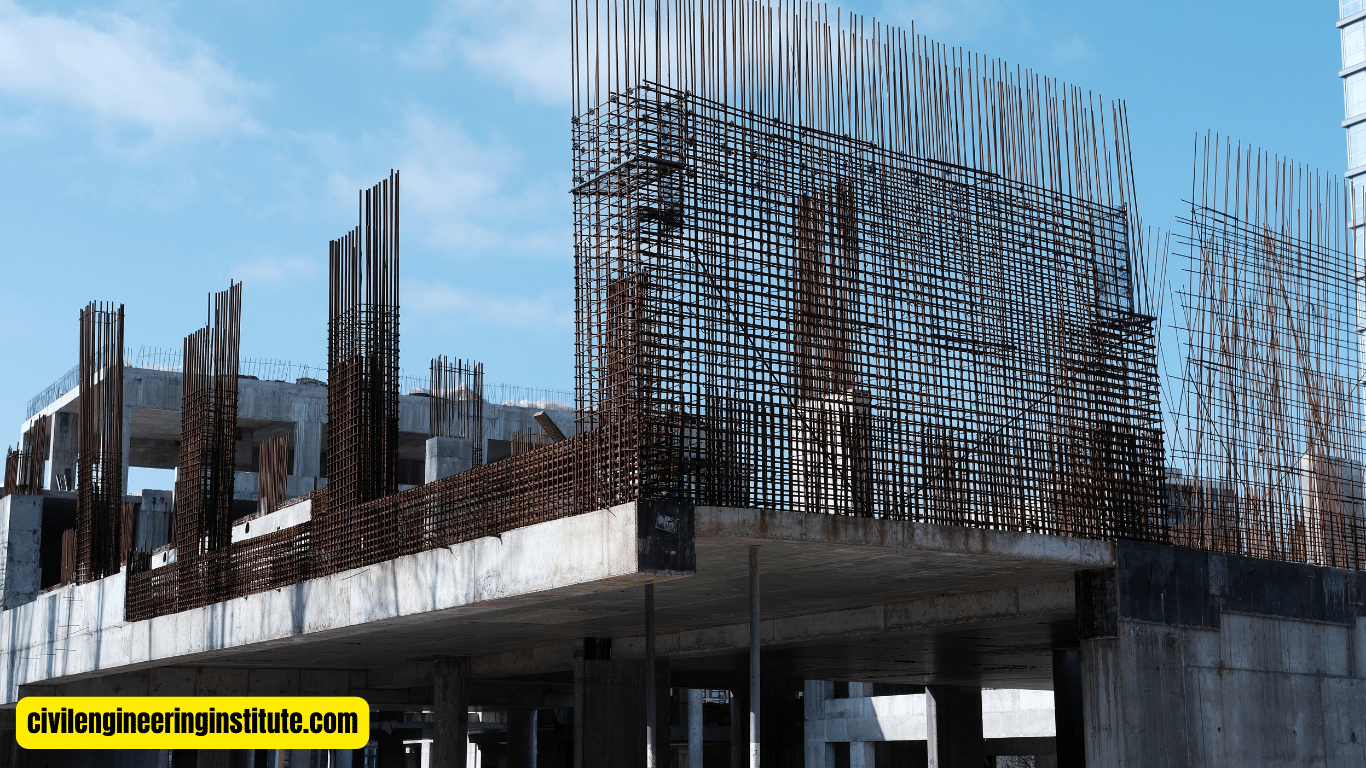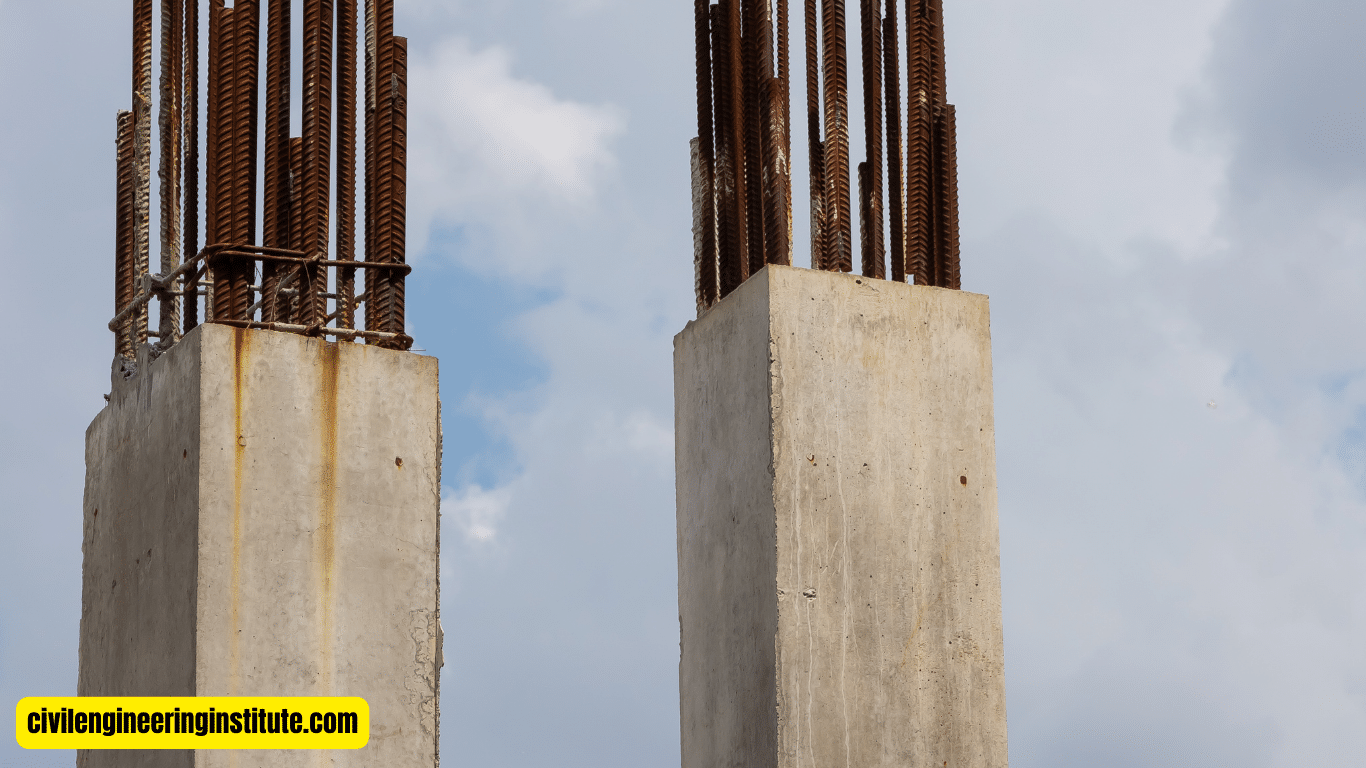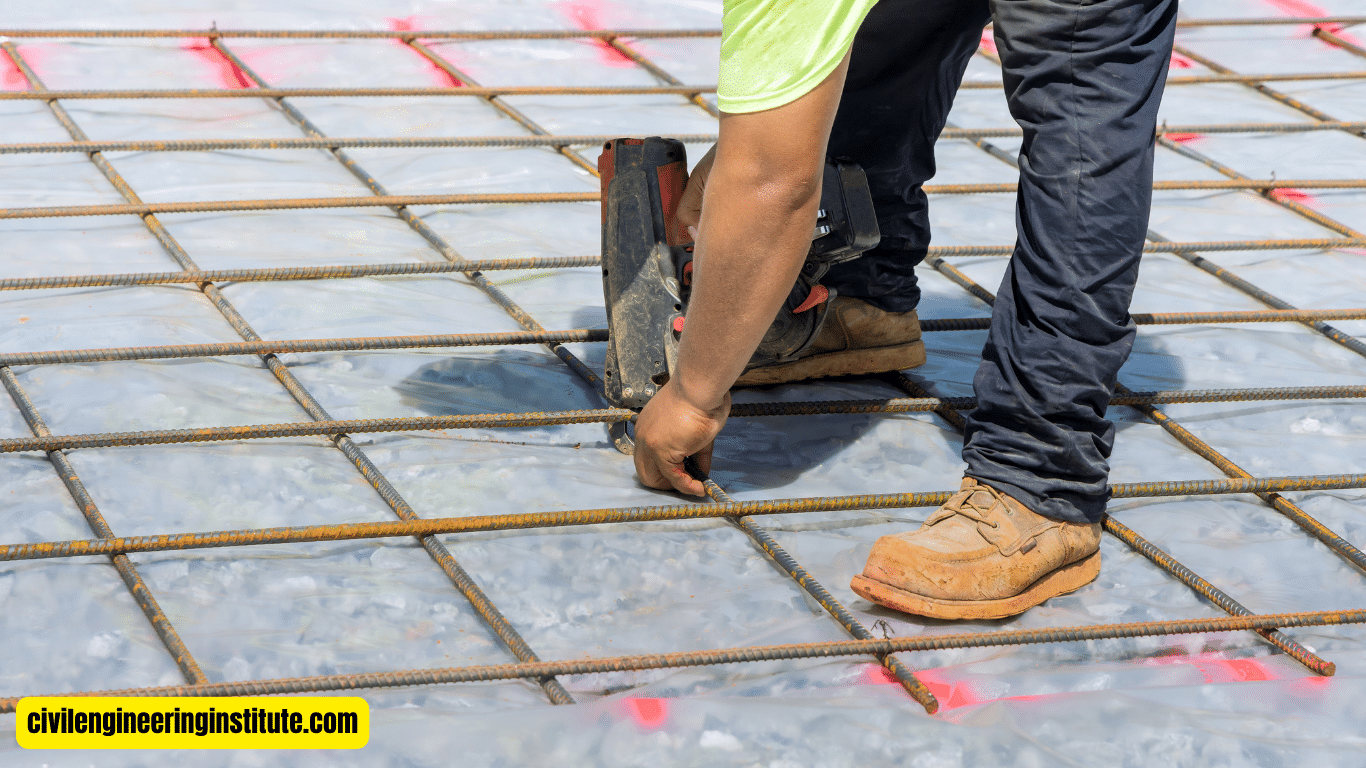Why concrete cover is provided to reinforcement in structures because it provides protection against corrosion and ensures the durability and strength of the building. When steel reinforcement is placed within concrete, it’s vulnerable to moisture, chemicals, and environmental factors that can cause it to rust and weaken over time. The concrete cover acts as a shield, preventing these harmful elements from reaching the reinforcement.
By maintaining a proper concrete cover thickness, engineers can safeguard the structural integrity of buildings, roads, bridges, and other infrastructure projects. Ultimately, the provision of concrete cover enhances the lifespan of the structure and reduces the need for costly repairs or replacements in the future.
The Importance of Concrete Cover for Reinforcement: Ensuring Durability and Strength
In the realm of construction, ensuring the longevity and resilience of structures is paramount. One crucial aspect that contributes to this is the provision of concrete cover to reinforcement. While it may seem like a minor detail, the concrete cover plays a vital role in safeguarding the integrity of buildings, bridges, roads, and other infrastructure. In this article, we delve into why concrete cover is provided to reinforcement, exploring its significance in ensuring durability and strength.
Understanding Concrete Cover
Before delving into its importance, let’s first understand what concrete cover entails. Concrete cover refers to the thickness of concrete that surrounds and encases the reinforcing bars or steel mesh within a concrete structure. It acts as a protective barrier, shielding the reinforcement from external elements that could cause corrosion or degradation.
The Role of Reinforcement
To comprehend why concrete cover is crucial, it’s essential to grasp the function of reinforcement within concrete structures. Reinforcement, typically in the form of steel bars or mesh, is added to concrete to enhance its tensile strength. While concrete is excellent in compression, it lacks the same strength when subjected to tension or bending forces. Reinforcement helps mitigate this weakness, ensuring the structural integrity of the entire assembly.
Importance of Concrete Cover
- Corrosion Protection
- Enhanced Durability
- Prevention of Cracking
Corrosion Protection: One of the primary reasons for providing concrete cover to reinforcement is to protect it from corrosion. Steel reinforcement is susceptible to rust when exposed to moisture and oxygen over time. Corrosion can weaken the reinforcement, compromising the structural stability of the entire concrete structure. By enveloping the reinforcement with a sufficient layer of concrete cover, the risk of corrosion is significantly reduced, thereby prolonging the lifespan of the structure.
Enhanced Durability: The concrete cover serves as a barrier against various environmental factors that can degrade the reinforcement and compromise the durability of the structure. Exposure to harsh weather conditions, chemicals, and pollutants can accelerate the deterioration of reinforcement. However, with adequate concrete cover, these detrimental effects are minimized, ensuring the long-term durability of the concrete elements.
Prevention of Cracking: In addition to corrosion protection, concrete cover helps prevent cracking in concrete structures. Cracks can develop due to various factors, including shrinkage, temperature fluctuations, and structural loads. When reinforcement is adequately covered with concrete, it helps distribute and alleviate these stresses, reducing the likelihood of cracks forming and spreading throughout the structure.
Factors Influencing Concrete Cover Thickness
Several factors influence the appropriate thickness of concrete cover required for reinforcement. These include:
- Environmental Conditions
- Structural Design
- Material Properties
- Construction Practices
Environmental Conditions: The severity of environmental conditions, such as exposure to moisture, humidity, and corrosive agents, will dictate the necessary thickness of concrete cover.
Structural Design: The design specifications of the structure, including its intended use and load-bearing requirements, play a significant role in determining the appropriate concrete cover thickness.
Material Properties: The properties of the reinforcing steel and concrete, such as their corrosion resistance and compressive strength, influence the required thickness of concrete cover.
Construction Practices: Proper construction techniques, including adequate placement and compaction of concrete, ensure uniform concrete cover around reinforcement.
Some Key Points: Why concrete cover is provided to reinforcement
What is the concrete cover for the main reinforcement?
In construction, the concrete cover refers to the thickness of concrete surrounding the main reinforcement bars within a structure. It acts as a protective layer, shielding the reinforcement from external elements that could cause corrosion or damage. The concrete cover for the main reinforcement is crucial for ensuring the durability and longevity of the structure.
Why concrete cover is provided to reinforcement?
Cover blocks are small concrete or plastic spacers placed between the reinforcement and the formwork to maintain the specified concrete cover. They ensure that the reinforcement is positioned at the correct depth within the concrete element. Cover blocks help prevent the steel from coming into direct contact with the formwork, thus maintaining the desired concrete cover thickness.
Why is there more coverage for externally reinforced concrete?
External reinforced concrete elements are exposed to harsher environmental conditions such as weathering, moisture, and pollution. Therefore, they require a thicker concrete cover to provide adequate protection against corrosion and deterioration. The additional cover helps safeguard the reinforcement from damage and ensures the structural integrity of the exterior elements.
What is the purpose of providing a certain minimum level of coverage for reinforcement?
The provision of a certain minimum cover for reinforcement is essential for several reasons. Firstly, it protects the reinforcement from corrosion, which can weaken the structure over time. Additionally, it helps prevent cracking and spalling of the concrete by providing adequate protection against environmental factors. Moreover, the minimum cover ensures that the reinforcement maintains its intended position within the concrete element, enhancing structural stability.
What is the concrete cover of reinforcing steel?
The concrete cover of reinforcing steel refers to the distance between the outer surface of the concrete and the outermost surface of the reinforcement bar. It is measured perpendicular to the surface of the concrete. The concrete cover is specified in construction drawings and is essential for maintaining the structural integrity and durability of the reinforced concrete elements.
What is the maximum concrete cover for reinforcement?
The maximum concrete cover for reinforcement is determined based on structural design requirements and construction standards. It ensures that the reinforcement remains adequately protected while optimizing the use of materials. Exceeding the maximum concrete cover may lead to inefficiencies in construction and compromise the performance of the structure.
What are the functions of cover reinforcement?
Cover reinforcement serves multiple functions in reinforced concrete structures. Firstly, it protects the main reinforcement by maintaining the specified concrete cover thickness. Additionally, it helps distribute loads and stresses evenly throughout the concrete element, enhancing its structural integrity. Cover reinforcement also assists in controlling crack formation and propagation, thereby improving the durability and performance of the structure.
What is Cover in Steel Reinforcement?
In steel reinforcement, the cover refers to the distance between the outer surface of the concrete and the outermost surface of the reinforcement bar. It is essential for ensuring the adequate protection of the reinforcement from corrosion and other environmental factors. Proper cover ensures the longevity and structural integrity of reinforced concrete elements.
What is the purpose of a cover block?
A cover block is a small spacer used in reinforced concrete construction to maintain the specified concrete cover over reinforcement bars. It ensures that the reinforcement remains at the correct depth within the concrete element during casting. Cover blocks help prevent corrosion of the reinforcement and ensure the structural integrity and durability of the concrete structure.
What is another name for concrete cover?
Another term commonly used for concrete cover is “clear cover.” Both terminologies refer to the distance between the surface of the concrete and the outermost surface of the reinforcement bar. Clear cover is a critical parameter in reinforced concrete design and construction, ensuring the protection and performance of the reinforcement within the structure.
What is the minimum concrete cover?
Minimum concrete cover refers to the smallest acceptable distance between the surface of the concrete and the outermost surface of the reinforcement bar. It is specified in construction codes and standards to ensure adequate protection of the reinforcement from corrosion, environmental factors, and mechanical damage. A minimum concrete cover is essential for maintaining the durability and structural integrity of reinforced concrete elements.
Conclusion
In conclusion, the provision of concrete cover to reinforcement is indispensable for ensuring the durability and strength of concrete structures. By acting as a protective barrier against corrosion, environmental factors, and cracking, concrete cover prolongs the lifespan of buildings, bridges, and infrastructure projects. Engineers and construction professionals must adhere to appropriate concrete cover thickness specifications to guarantee the structural integrity and longevity of concrete structures. By understanding the importance of concrete cover, we can build safer, more resilient, and long-lasting infrastructure for generations to come.
FAQs
Why is concrete cover important for reinforcement?
Concrete cover protects reinforcement from corrosion and environmental damage, ensuring the longevity of structures.
What does concrete cover do for reinforcement?
The concrete cover acts as a shield, preventing moisture and other harmful elements from reaching the reinforcement, thus maintaining its strength.
How does concrete cover prevent corrosion?
By providing a barrier between the reinforcement and external factors like water and chemicals, concrete cover reduces the risk of corrosion, which can weaken the structure.
Is concrete cover necessary for all reinforcement?
Yes, concrete cover is necessary for all reinforcement to ensure structural integrity and durability, regardless of the type or size of the structure.
How thick should the concrete cover be for reinforcement?
The thickness of the concrete cover depends on factors such as environmental conditions, structural design, and material properties, with minimum thickness requirements specified in construction codes.
What happens if the concrete cover is too thin?
Inadequate concrete cover can lead to corrosion of the reinforcement, compromising the strength and stability of the structure over time.
Why is there more concrete cover for external reinforcement?
External reinforcement is exposed to harsher environmental conditions, requiring thicker concrete cover to provide adequate protection against corrosion and damage.
What are the consequences of insufficient concrete cover?
Insufficient concrete cover can result in premature deterioration of the reinforcement, leading to structural failure, costly repairs, and safety hazards.
Can concrete cover be added or increased after construction?
It’s challenging to add or increase concrete cover after construction without compromising the structural integrity of the existing concrete elements.
Who ensures the proper provision of concrete cover in construction projects?
Engineers, architects, and construction professionals are responsible for ensuring the proper provision of concrete cover in accordance with design specifications and construction standards.






